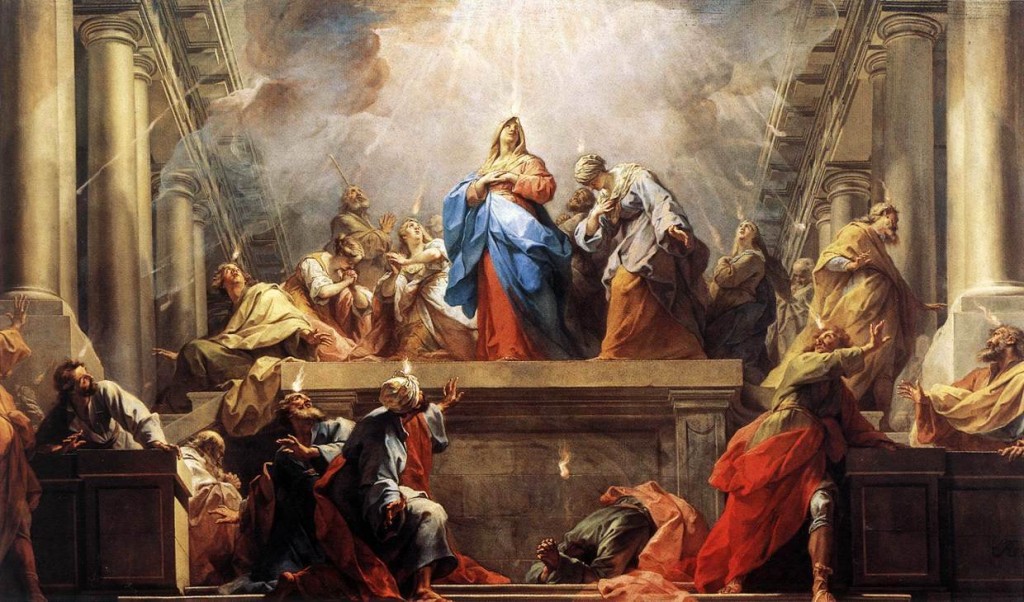My soul exalts the Lord, and my spirit has rejoiced in God my Savior. For He has had regard for the humble state of His bondslave; for behold, from this time on all generations will count me blessed (Luke 1:46-48).
Every year as we approach the 4th Sunday of Advent the gospel reading provokes us to reflect upon the Virgin Mary. As a protesting Pentecostal, there are certain presumptions that I bring to the task. The greatest presumption is to ignore any honor bestowed upon the Virgin, to make her a footnote in the Christmas story. But if I desire to hear the Spirit in the written word of God, then I must be willing to put my presumptions aside and take a fresh look at Mary, the mother of my Lord Jesus Christ.
Greetings, favored one! The Lord is with you.
Blessed are you among women, and blessed is the fruit of your womb!
No, these accolades are not from the Catechism of the Catholic Church; these words are from the Gospel of Luke (1:28, 42).
The archangel Gabriel greeted the Virgin Mary with the words, “Greetings, favored one! The Lord is with you” (Luke 1:28). This is much more than a common greeting. Gabriel’s greeting perplexed Mary in a manner a common greeting would not. The declaration of Mary as “Favored One” is a formal greeting, a title bestowed upon her by the divine messenger. Mary is favored because through her God is about to perform a mighty act of salvation. Mary’s obedience is declared in her response to Gabriel’s announcement: “Behold, the bondslave of the Lord; may it be done to me according to your word” (Luke 1:38). As an obedient and virtuous servant of Yahweh, Mary is unique in salvation history.
The angel said to her, “Do not be afraid, Mary; for you have found favor with God. And behold, you will conceive in your womb and bear a son, and you shall name Him Jesus. He will be great and will be called the Son of the Most High; and the Lord God will give Him the throne of His father David; and He will reign over the house of Jacob forever, and His kingdom will have no end” (Luke 1:30-33).
Mary is “the mother of my Lord” (Luke 1:43). The ancient theologians referred to Mary as Theotokos, that is, God-bearer. The common designation is “Mother of God.” As God-bearer, Mary is bearer of the Spirit and the Son. The Incarnation of Christ was effected by will of the Father, the submission of the Son, the agency of the Holy Spirit, and the obedience of the Virgin.
The Holy Spirit will come upon you, and the power of the Most High will overshadow you; and for that reason the holy Child shall be called the Son of God (Luke 1:35).
As an obedient servant of Yahweh, Mary embodies all the faithful and anointed women before her: Sarah, Ruth, Hannah, and Esther, among others. However, Mary is bearer of the Holy Spirit in a manner that is unique to humanity. Only the Virgin Mary has birthed a child conceived by the Holy Spirit, a child who is fully human and fully God – the Lord. There is another striking feature of Luke’s narrative. When Mary visited Elizabeth, her relative who was also miraculously pregnant, Elizabeth and her child were “filled with the Holy Spirit.” This is an extraordinary encounter. The Spirit-baptism of Elizabeth and the baby John occurred at the “sound” of Mary’s greeting. When Elizabeth is filled with the Spirit she responded with “a loud voice” and the prenatal John the Baptist leapt for joy (Luke 1:39-45). This narrative anticipates the outpouring of the Spirit on the day of Pentecost (Acts 2). Mary’s prophetic song offers the first joyful refrains of the Gospel:
He has done mighty deeds with His arm; He has scattered those who were proud in the thoughts of their heart. He has brought down rulers from their thrones, and has exalted those who were humble. He has filled the hungry with good things; and sent away the rich empty-handed. He has given help to Israel His servant, in remembrance of His mercy, as He spoke to our fathers, to Abraham and his descendants forever (Luke 1:51-55).
Mary, as Spirit-bearer, is the First Lady of Pentecost. The tradition of Mary as Spirit-bearer has dominated the imagination of the church for centuries. This can be seen in the paintings and icons of Pentecost. The Holy Spirit is depicted as coming from Heaven upon all the disciples of Jesus. Mary is the central figure in these images because of her unique role as God-bearer.

Mary is not the source of the Spirit. The Spirit is the gift of the Father and Son. However, Mary’s obedience to the will of God and her status as the “Favored One” suggest that among humans she is uniquely “full of grace.” This is affirmed by Elizabeth’s proclamation: “Blessed are you among women, and blessed is the fruit of your womb!” (Luke 1:42). The fruit of Mary’s womb is the seed that has crushed the head of the serpent (Genesis 3:15; Revelation 12:1-2). Mary, as the mother of redeemed humanity, has priority over Eve. Mary is a daughter of Abraham. God promised Abraham, “…in you all the families of the earth will be blessed” (Genesis 12:3). Mary’s child is the fulfillment of all God’s promises and humanity’s hopes. Mary is blessed; her child is blessed; humanity is blessed.
Originally posted on December 21, 2012.
